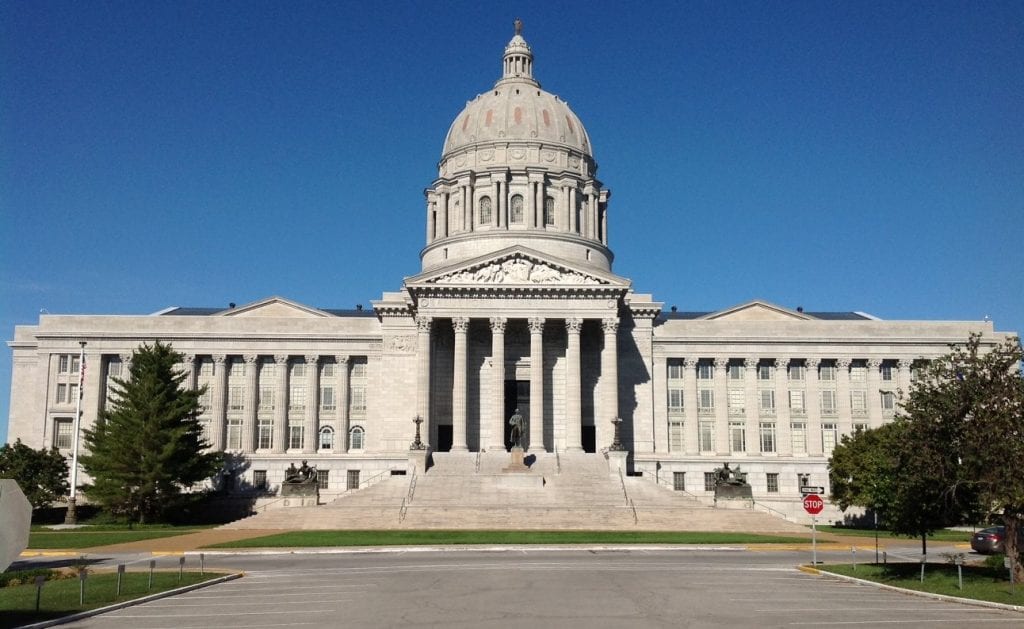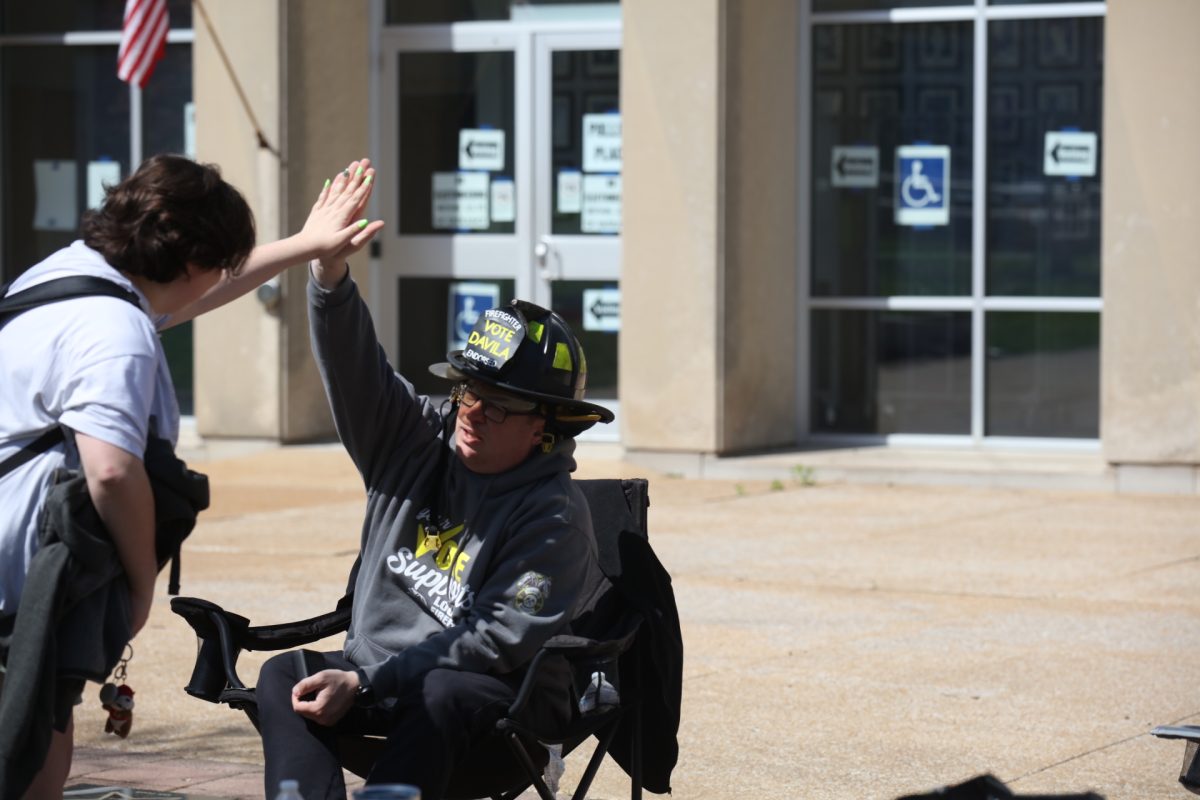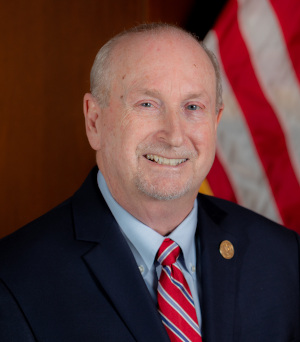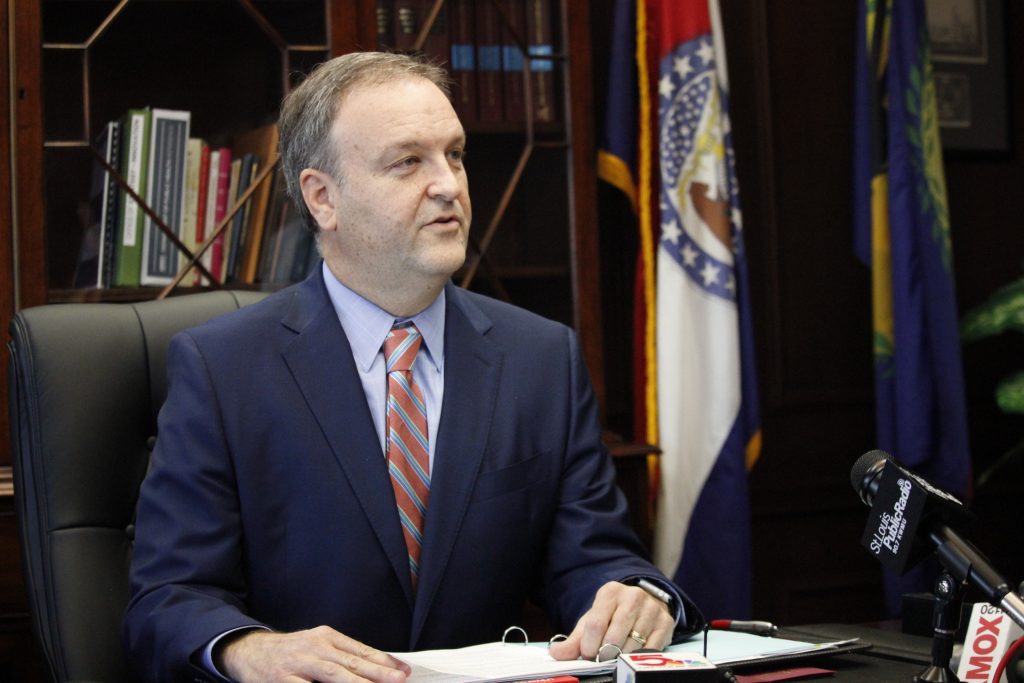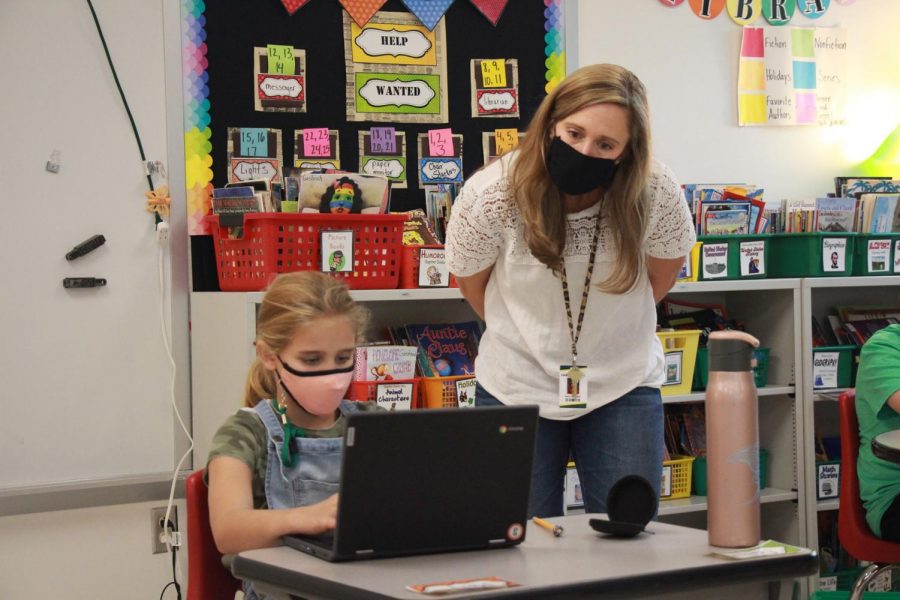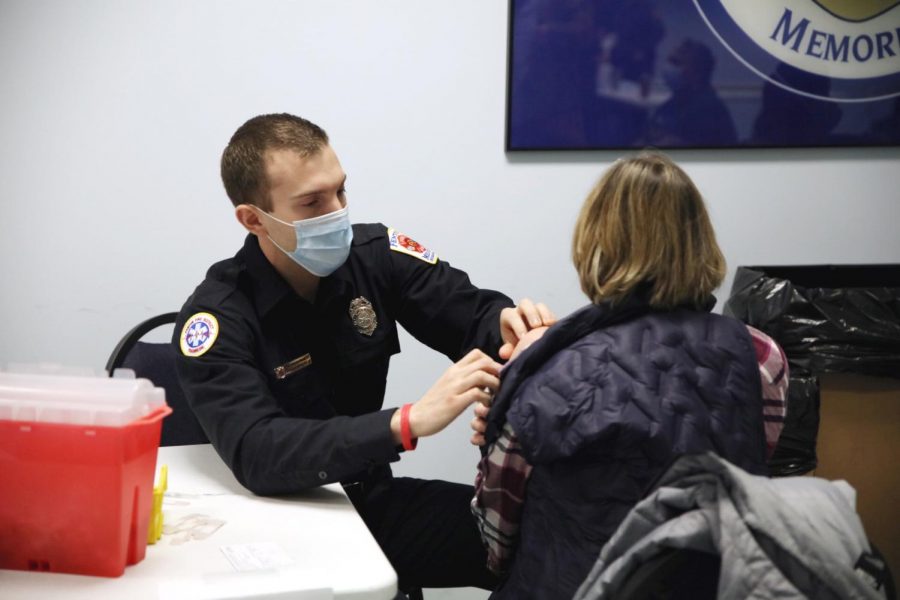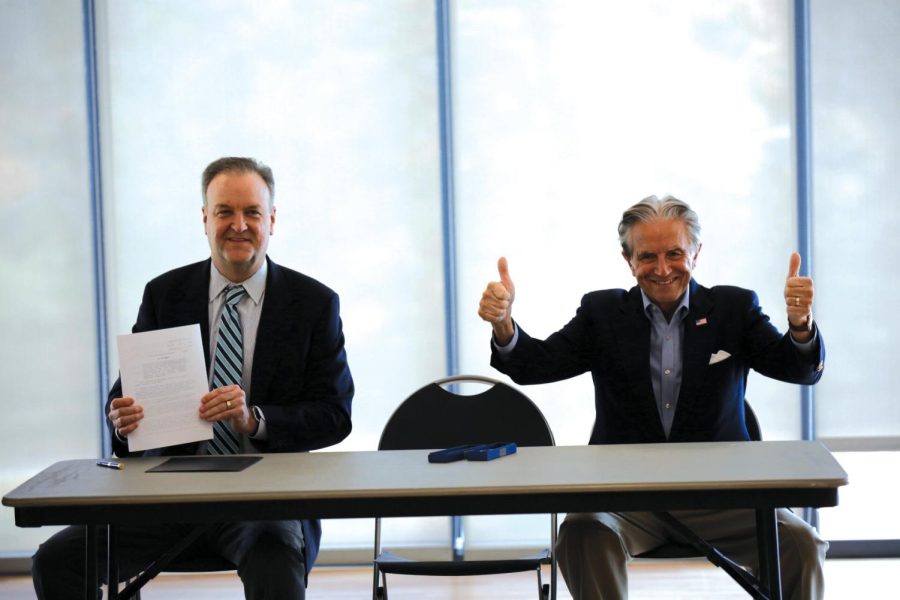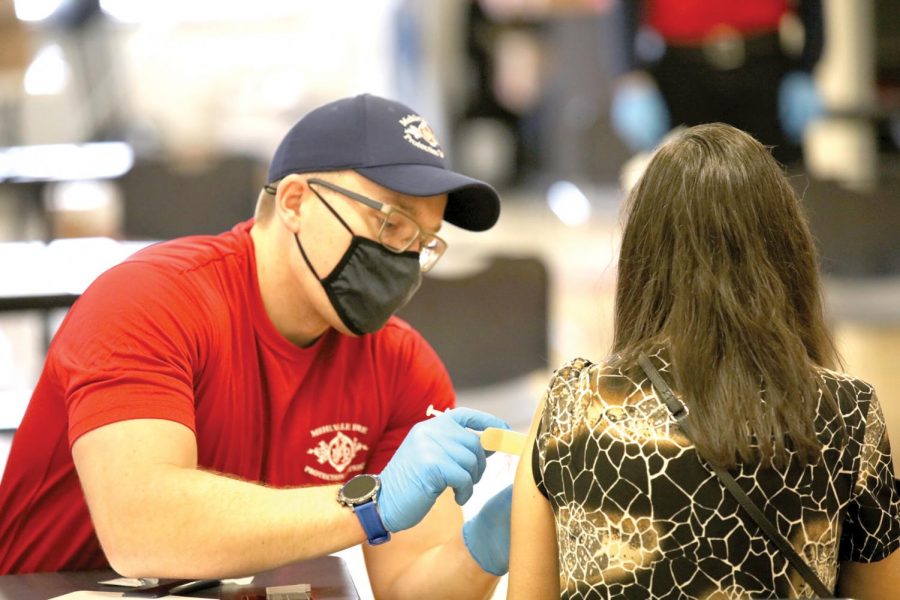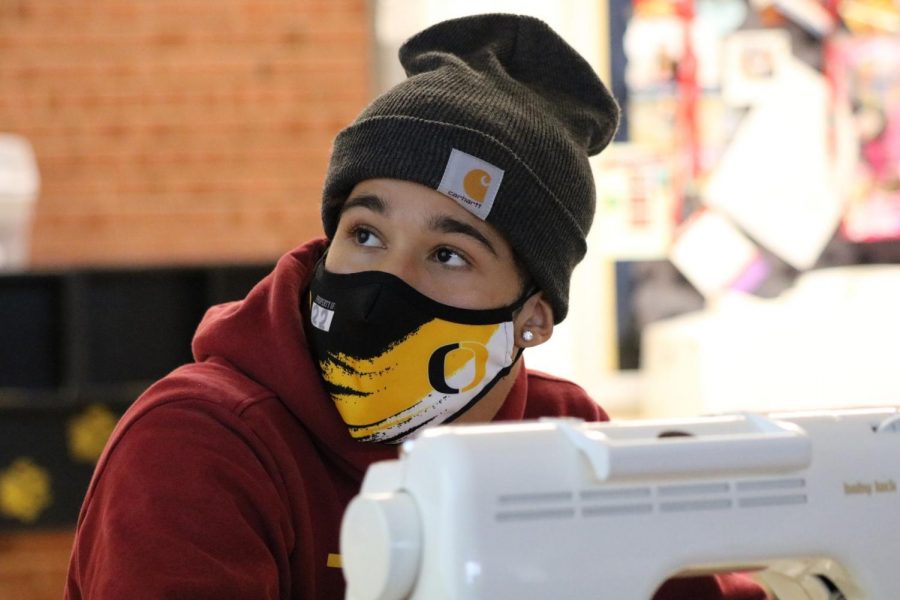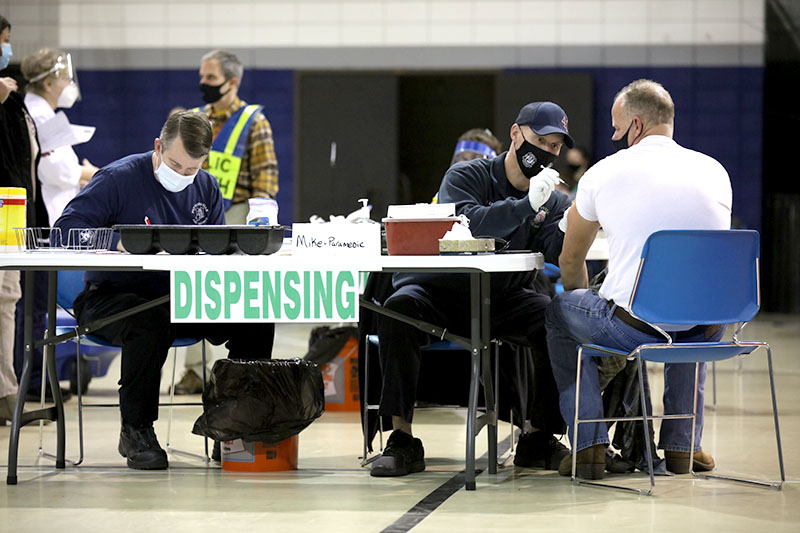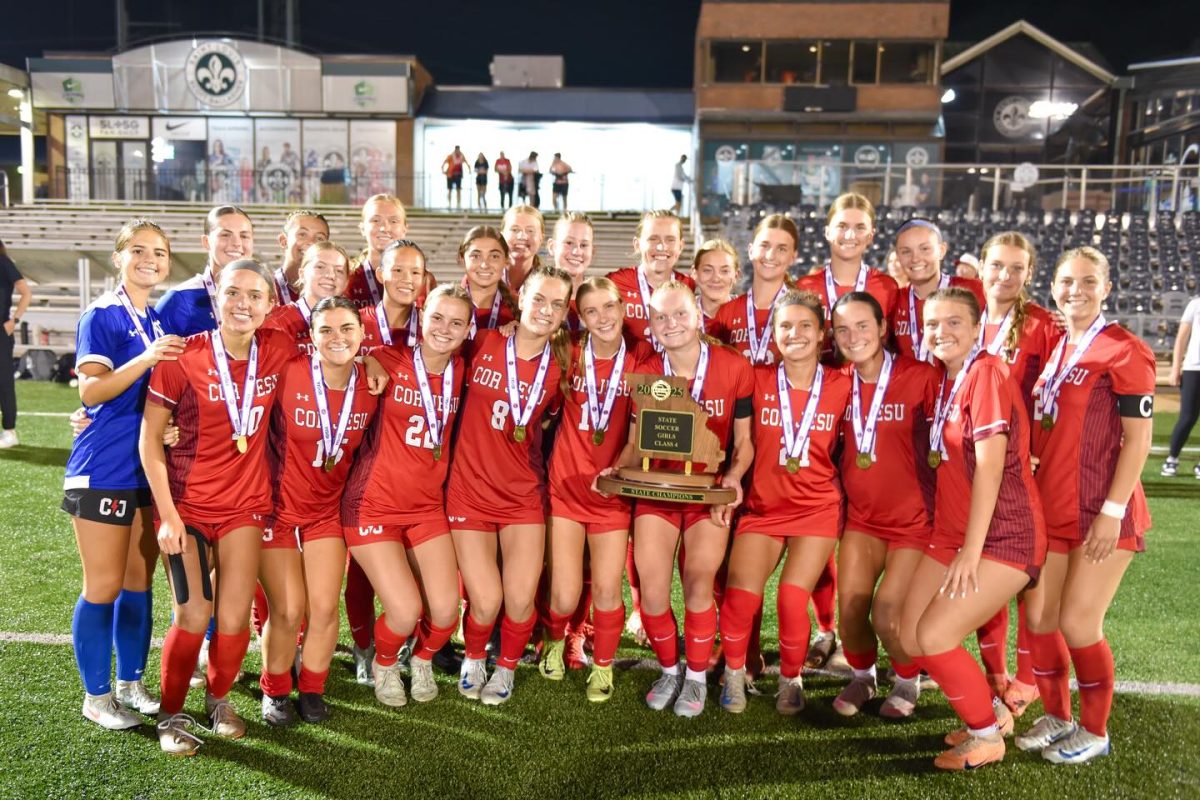Sitting at least 6 feet apart from one another, Missouri state senators met Tuesday to debate a more than $5 billion COVID-19 relief spending package which would provide additional funding through the end of June.
The spending plan both accounts for the federal money the state has been promised so far and additional money lawmakers hope to get before the current budget year ends June 30. Lawmakers gather again tomorrow to give the plan final approval.
As senators worked on finishing out this year’s budget, they heard dire predictions that next year’s budget could be as much as $1 billion short because of the impact of the virus.
Sen. Caleb Rowden, R-Columbia, opened the Senate’s day with a prayer focused on the COVID-19 crisis.
“We come before you today in an extraordinary moment in time, a moment we cannot entirely understand,” Rowden said. “Extraordinary moments often produce opportunities for courage, bravery and heroism. And we have seen those traits in individuals and families and businesses across this state over the past several weeks.”
The Senate Appropriations Committee hearing room was set up to adhere with the state social distancing mandate. Most — but not all — of the senators and other staff members wore masks, and Sen. Jeanie Riddle, R-Mokane, called in to the hearing instead of participating in-person at the Capitol.
It made for a strange and eerie scene, but legislators accomplished what they set out to do.
The supplemental budget bill, which was passed out of committee unanimously, is partially aspirational. It authorizes spending more than $5 billion in federal money, much of which is not guaranteed to be sent to the state.
Despite the uncertainty, lawmakers were tasked with authorizing the spending of whatever money the state has or could receive in the next three months.
The state has already been promised about $2.4 billion in federal relief. The spending plan approved by the Senate committee on Tuesday calls for an additional $3 billion or so.
The relief package agreed on would include about $1 billion for local governments to use on COVID-19 relief and response efforts. Funds are included for a wide range of other COVID-related needs, from child care and health care to nursing homes and public safety.
State Budget Director Dan Haug told senators that the economic impact of the COVID-19 pandemic would likely be significant for Missouri. Without the budget withholdings Gov. Mike Parson announced a few weeks ago, Haug said the state would have had about a $200 million general revenue hole.
“This is uncharted territory for the economy, but I think we’re trying to prepare for something on the magnitude of what happened with the Great Recession,” Haug said. “We think this is going to be something that affects the economy and our state revenues both in FY20 (the current year) and FY21.”
Included in Parson’s withholdings was a little more than $80 million in state funds from higher education institutions. The University of Missouri system, for example, is set to lose about $36.5 million. In the new budget plan, the system would get up to $138 million in federal relief if the federal government provides it.
Christian Basi, a spokesperson for the University of Missouri-Columbia, said the university has lost income from the refunds to students for student housing, the recreational complex fee and, in some cases, dining. Basi was unsure about additional losses in the future, but said they are preparing for the unexpected.
“We really don’t know what the future holds. This is a situation that we have not been in before,” Basi said.
Federal money will help blunt the effects of the governor’s withholdings, but it remains unclear how much.
The lack of clarity surrounding federal funding that is already promised to the state caused some frustration among senators.
Much of the federal money that Missouri expects to come from the existing federal laws written in response to COVID-19 — the Families First Coronavirus Response Act and the CARES Act — currently lacks clear guidelines dictating how the money can be spent.
The federal spending guidelines are expected to be clarified by April 24.
It is also uncertain how much additional COVID-19 relief funding the federal government will send to states, if any. But if this money does come down, it could be used to put money back into higher education institutions like the UM system.
Basi said he didn’t want to speculate on the potential of federal funding because the situation remains uncertain.
“Until we see an actual financial document, we are going to continue planning very conservatively,” he said.
2021 Budget
Haug said the 2021 budget plan is still largely unknown because it remains unclear at the moment how long this recession will last and what the effects will be.
“We want to see a little bit more what the economic data looks like,” he said. “What’s the unemployment look like?”
But he assured senators that once the supplemental budget bill was passed, efforts would turn to the 2021 budget.
When Sen. Jamilah Nasheed, D-St. Louis, asked what the estimated potential shortfall would be in 2021, Haug said there is no set estimate because the situation is so fluid.
“But I think if you look at the Great Recession, I think you could be looking at a billion dollars in FY21 when you know most of our revenue for general revenue is income tax and sales tax,” Haug said. “And so if you look at something similar to the Great Recession, that’s probably the magnitude you’re looking at.”
Haug also said there have been discussions regarding the potential of delaying the 2021 budget discussion until a special legislative session this summer, which would allow more time to determine what 2021 revenues will look like. He had no additional information on what other legislation might be considered during a special session.
“What else that would include is well above my pay grade,” Haug said.
Columbia Missourian reporter Maria Benevento and KOMU reporter Daniel Perreault contributed to this report.



